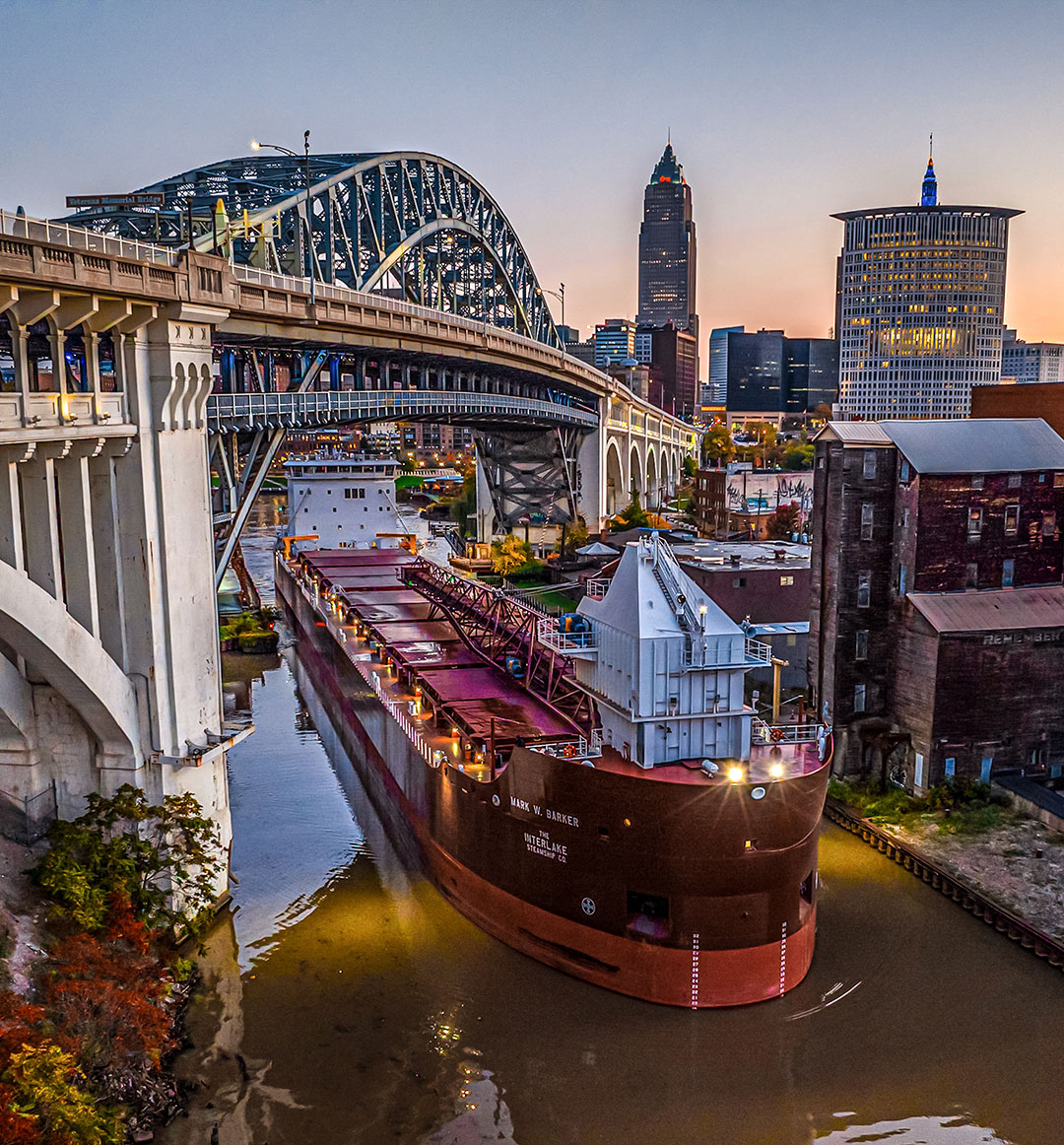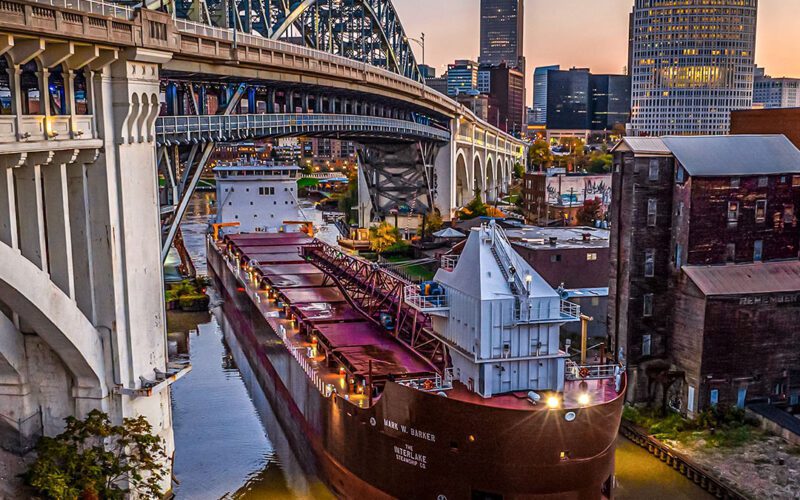
Mark W. Barker said the name of the freighter the Mark W. Barker wasn’t his idea.
“We are a family-owned business and since ’87, my dad has run the building,” said Barker, president of the Interlake Steamship Company and son of its chairman, James R. Barker, who suggested the name. “I wasn’t totally thrilled with the idea but he’s my dad and he’s the chairman,” he told Professional Mariner.
The Cleveland-based Great Lakes freight shipping company has long named new vessels after executives.
The elder Barker is the namesake of a 1,000-foot bulk carrier, commissioned in 1976.
Interlake hasn’t had the opportunity to name a new freighter for decades, and neither has any other U.S. Great Lakes carrier company. With its maiden voyage late last year the Mark W. Barker became the first new self-unloading, self-propelled, U.S.-flagged cargo vessel to transverse the Great Lakes in 41 years.
There are 55 U.S.-flagged cargo vessels in the Great Lake system, as of the Department of Transportation’s latest inventory of the fleet, published in 2014. The last rush of new construction occurred in the early 1980s, when companies sought to increase their capacity with larger ships. Since then, the fleet has held up well, creating little need for new constructions.
Fresh water doesn’t corrode steel in the same way as salt, allowing ships on the Great Leaks to have long lifespans. Among Interlake’s working ships is a decommissioned World War II-era Navy oiler, constructed in 1942, and now used for cargo. The company also employs a 1952 coal-fired passenger ferry on a route between Michigan and Wisconsin on Lake Michigan.
Many Great Lakes carriers have ships in service that date to the mid-20th century, said Eric Peace, vice president of the Lakes Carriers’ Association.
One reason is that fresh water does not corrode steel like saltwater does. Another is that industry has stayed static in the region for the last decades. Shipping companies reliably have supplies of iron ore, granite and other raw materials to transport, but have not had to add new ships to cater to new business.
“There’s not going to be a huge shift in market,” said Peace. “I don’t think they’re going to build like ten more steel mills or anything like that. So what you see is what you get as far as the number of vessels. So our get our companies are investing to maintain what they have.”
Interlake’s new ship was not the result of a need for more vessels or to replace of an older one. It is a custom build for the unique needs of a long-time client, Cargill Deicing Technology, whose Cleveland salt mine has always presented some logistical difficulties.
The Mark W. Barker is 639 feet in length, 78 feet in beam, 45 feet in depth and 28,000 dead weight tons. Interlake’s partner, Fincantieri Bay Shipbuilding, of Sturgeon Bay, Wis., constructed the ship to be nimble enough to fit into the river and large enough to deliver a significant cargo of road salt.

